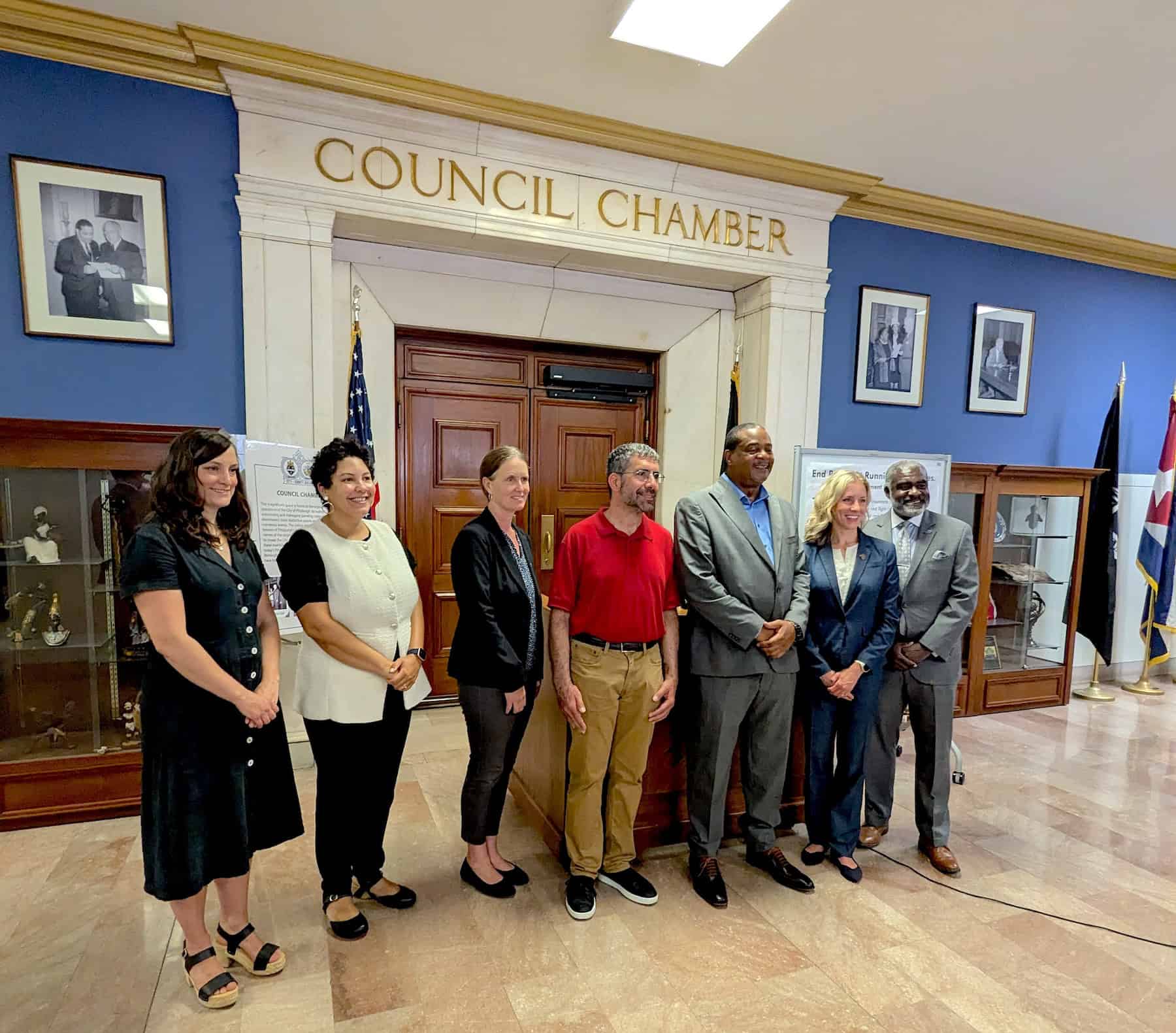
In the spirit of Vision Zero, City looking to install automated red light camera enforcement at select intersections
UPDATE September 10, 2024: Pittsburgh City Council approves the use of Automated Red Light Enforcement.
Pittsburgh is pushing to become the second city in Pennsylvania to install Automated Red Light Enforcement cameras (ARLE). To assist with Mayor Gainey’s Vision Zero commitment to eliminate traffic fatalities and serious injuries, Councilwoman Erika Strassburger (D8) has introduced legislation that would permit Pittsburgh to install automated enforcement cameras at select locations.
“It comes down to this, this bill is about saving lives… This bill will cost you nothing if you choose to drive safely.”
Pittsburgh City Councilwoman Erika Strassburger
After the State of Pennsylvania allowed municipalities to install ARLE in the state, the City of Pittsburgh passed their own legislation in 2013 to allow them to install them in Pittsburgh. However, the Peduto Administration, despite backing the initiative, never got it off the ground. That local ordinance expired in 2017.
On average, about 120 Pittsburghers are seriously injured while another 20 are killed on our roadways each year. About a third of these victims are pedestrians. Councilwoman Erika Strassburger has introduced new legislation to bring red light cameras to Pittsburgh. Only this time, through the lens of Mayor Gainey’s Vision Zero commitment to eliminate traffic fatalities in Pittsburgh, there is renewed energy to see them actually installed this time.
The city plans to install red light cameras in a way that will be determined based on crash history, type, observation criteria (such as aggressive driving or previous countermeasures that didn’t work), and number of existing red light camera violations already found.
Pennsylvania’s bill requires municipalities that have installed ARLE cameras to send all proceeds to the state. The municipality can then reclaim half the money, but it must be used on road safety improvements. The other half goes into a pot where other Pennsylvania municipalities can request funds, again earmarked for road safety improvements. So far, only Philadelphia has installed red light cameras, but other municipalities, including Pittsburgh, have benefited from the shared funds.

Automated enforcement has the potential to reduce dangerous driving, and has been successfully implemented in cities across the country to positive results and lives saved.
Some Quick Safety Facts:
- “When it comes to crash reductions, an IIHS study comparing large cities with red light safety cameras to those without found the devices reduced the fatal red light running crash rate by 21% and the rate of all types of fatal crashes at signalized intersections by 14% (Hu & Cicchino, 2017).” (iihs.org)
- “For right angle crashes, the review found a decrease in overall crashes and a decrease in injury crashes. ” CDC
- “Researchers compared trends in annual fatal crashes in 14 cities which ended their camera programs with those in 29 cities in the same regions that continued their programs. They found that in the 14 cities where cameras were removed, fatal red-light-running crash rate increased by 30%, and the rate of all fatal crashes increased by 16% at all signalized intersections. The study estimated 63 deaths could have been prevented if the cities did not end their red-light camera programs.” National Conference of State Legislators


Additionally, red light cameras eliminate the need for armed police officers to engage with drivers who violate the law, as the ticket is simply mailed to their home.
“We believe in taking armed enforcement out of the traffic enforcement equation whenever possible. People committing dangerous acts need to be held responsible and this is a way to do it in a safer, more equitable and unbiased way.”
Scott Bricker, Executive Director, BikePGH
Not surprisingly, drivers often drive the same routes every day, and like any area that they need to approach with extra vigilance, quickly adapt and approach these intersections with more care. At first there is shown to be a large uptick in fines, but these fines decrease as people adjust and become aware and actually stop running red lights. Philadelphia experienced behavior change at intersections with red light cameras. After 24 months of red light camera enforcement, ARLE tickets were cut in half, from about 30,000 tickets issued to about 15,000.
Red light cameras will take some adjusting to, but BikePGH supports the outcome of safer streets that they ultimately achieve through crash reduction and reinvestment of fines into street safety enhancements.